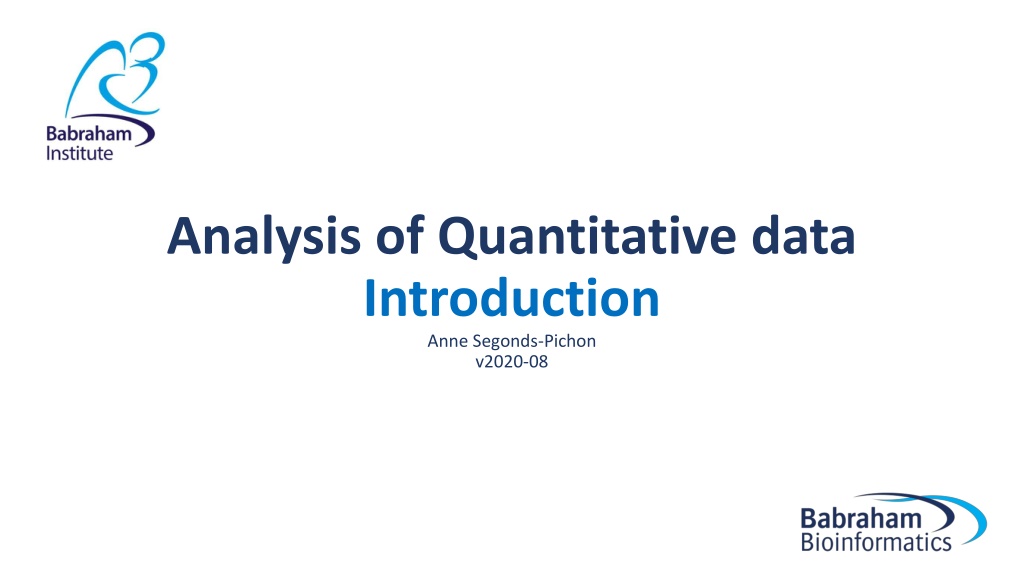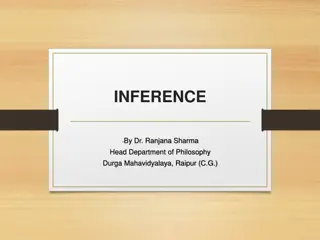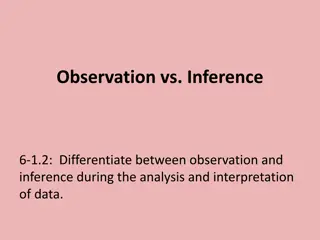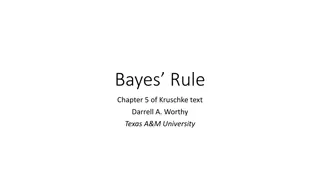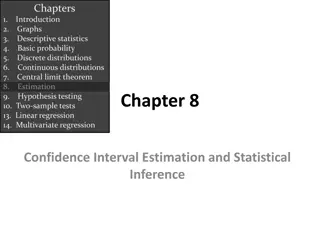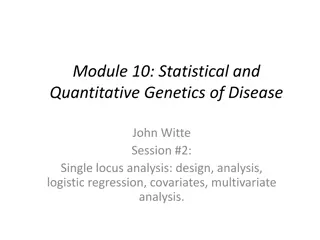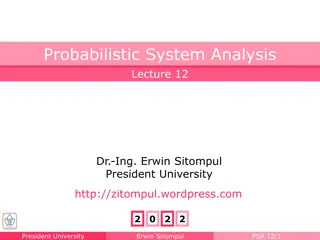Understanding Statistical Inference and Significance in Quantitative Data Analysis
Explore the key concepts of statistical inference, null hypothesis, error types, and the signal-to-noise ratio in quantitative data analysis. Learn about choosing the correct statistical test based on data assumptions, such as parametric tests with specific requirements and non-parametric tests. Gain insights into the importance of signal-to-noise ratio in determining statistical significance.
- Statistical Inference
- Quantitative Data Analysis
- Signal-to-Noise Ratio
- Parametric Tests
- Non-Parametric Tests
Download Presentation

Please find below an Image/Link to download the presentation.
The content on the website is provided AS IS for your information and personal use only. It may not be sold, licensed, or shared on other websites without obtaining consent from the author. Download presentation by click this link. If you encounter any issues during the download, it is possible that the publisher has removed the file from their server.
E N D
Presentation Transcript
Analysis of Quantitative data Introduction Anne Segonds-Pichon v2020-08
Outline of this section Assumptions for parametric data Comparing two means: Student s t-test Comparing more than 2 means One factor: One-way ANOVA Two factors: Two-way ANOVA Relationship between 2 continuous variables: Linear: Correlation Non-linear: Curve fitting Model diagnostics: Goodness-of-fit Non-parametric tests
Introduction Key concepts to always keep in mind Null hypothesis and error types Statistics inference Signal-to-noise ratio
The null hypothesis and the error types The null hypothesis (H0): H0 = no effect e.g. no difference between 2 genotypes The aim of a statistical test is to reject or not H0. Statistical decision True state of H0 H0 True (no effect) Type I error False Positive H0 False (effect) Correct True Positive Reject H0 Do not reject H0 Correct True Negative Type II error False Negative Traditionally, a test or a difference is said to be significant if the probability of type I error is: =< 0.05 High specificity = low False Positives = low Type I error High sensitivity = low False Negatives = low Type II error
Statistical inference Sample Population Difference Meaningful? Real? Yes Statistical test Statistic e.g. t, F = Big enough? + Noise + Sample Difference
Signal-to-noise ratio Stats are all about understanding and controlling variation. Difference + Noise Difference Noise signal noise If the noise is low then the signal is detectable = statistical significance signal noise but if the noise (i.e. interindividual variation) is large then the same signal will not be detected = no statistical significance In a statistical test, the ratio of signal to noise determines the significance.
Analysis of Quantitative Data Choose the correct statistical test to answer your question: They are 2 types of statistical tests: Parametric tests with 4 assumptions to be met by the data, Non-parametric tests with no or few assumptions (e.g. Mann-Whitney test) and/or for qualitative data (e.g. Fisher s exact and 2 tests).
Assumptions of Parametric Data All parametric tests have 4 basic assumptions that must be met for the test to be accurate. First assumption: Normally distributed data Normal shape, bell shape, Gaussian shape Transformations can be made to make data suitable for parametric analysis.
Assumptions of Parametric Data Frequent departures from normality: Skewness: lack of symmetry of a distribution Skewness = 0 Skewness > 0 Skewness < 0 Kurtosis: measure of the degree of peakedness in the distribution The two distributions below have the same variance approximately the same skew, but differ markedly in kurtosis. Flatter distribution: kurtosis < 0 More peaked distribution: kurtosis > 0
Assumptions of Parametric Data Second assumption: Homoscedasticity (Homogeneity in variance) The variance should not change systematically throughout the data Third assumption: Interval data (linearity) The distance between points of the scale should be equal at all parts along the scale. Fourth assumption: Independence Data from different subjects are independent Values corresponding to one subject do not influence the values corresponding to another subject. Important in repeated measures experiments
Analysis of Quantitative Data Is there a difference between my groups regarding the variable I am measuring? e.g. are the mice in the group A heavier than those in group B? Tests with 2 groups: Parametric: Student s t-test Non parametric: Mann-Whitney/Wilcoxon rank sum test Tests with more than 2 groups: Parametric: Analysis of variance (one-way and two-way ANOVA) Non parametric: Kruskal Wallis (one-way ANOVA equivalent) Is there a relationship between my 2 (continuous) variables? e.g. is there a relationship between the daily intake in calories and an increase in body weight? Test: Correlation(parametric or non-parametric) and Curve fitting
